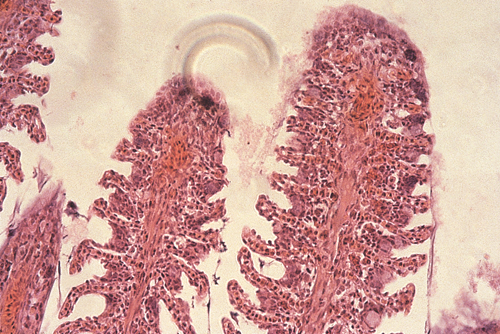Ornamental Fish Q&A 20
| This question was provided by Manson Publishing as part of the OVAL Project. See more Ornamental Fish Q&A. |
| Question | Answer | Article | |
| Describe the pathologic process occurring in the gill shown. | The photograph shows a moderate degree of epithelial hyperplasia of the gill. The secondary lamellae have become rounded up and shortened. At the tips of the primary lamellae, the adjacent secondary lamellae have become fused. |
Link to Article | |
| How would this disease process progress? | If gill irritation persists, the fusion of the secondary lamellae will continue, such that the clubbing of the whole length of the primary lamellae becomes complete. Further changes result in fusion of adjacent primary lamellae, thus obliterating any resemblance of normal gill structure. These changes predispose to the colonization by bacteria, which cause further gill damage and necrosis. This may lead to a generalized septicemia. |
Link to Article | |
| What are the possible causes? | These changes are the result of any irritation, including external parasites, suspended solids, heavy metals, or metabolic toxins (e.g. ammonia or nitrite). The reduced blood supply to the tissue increases the susceptibility to bacterial invasion. The common names for this condition are ‘environmental gill disease’ and ‘bacterial gill disease.’ |
Link to Article | |
